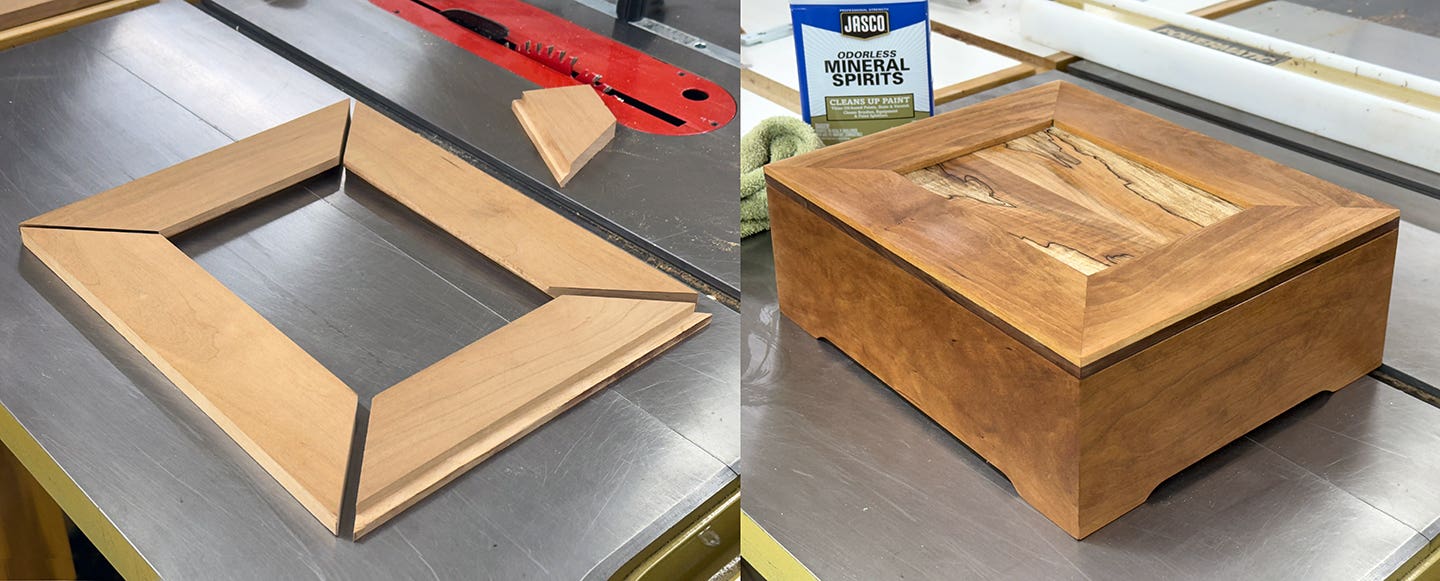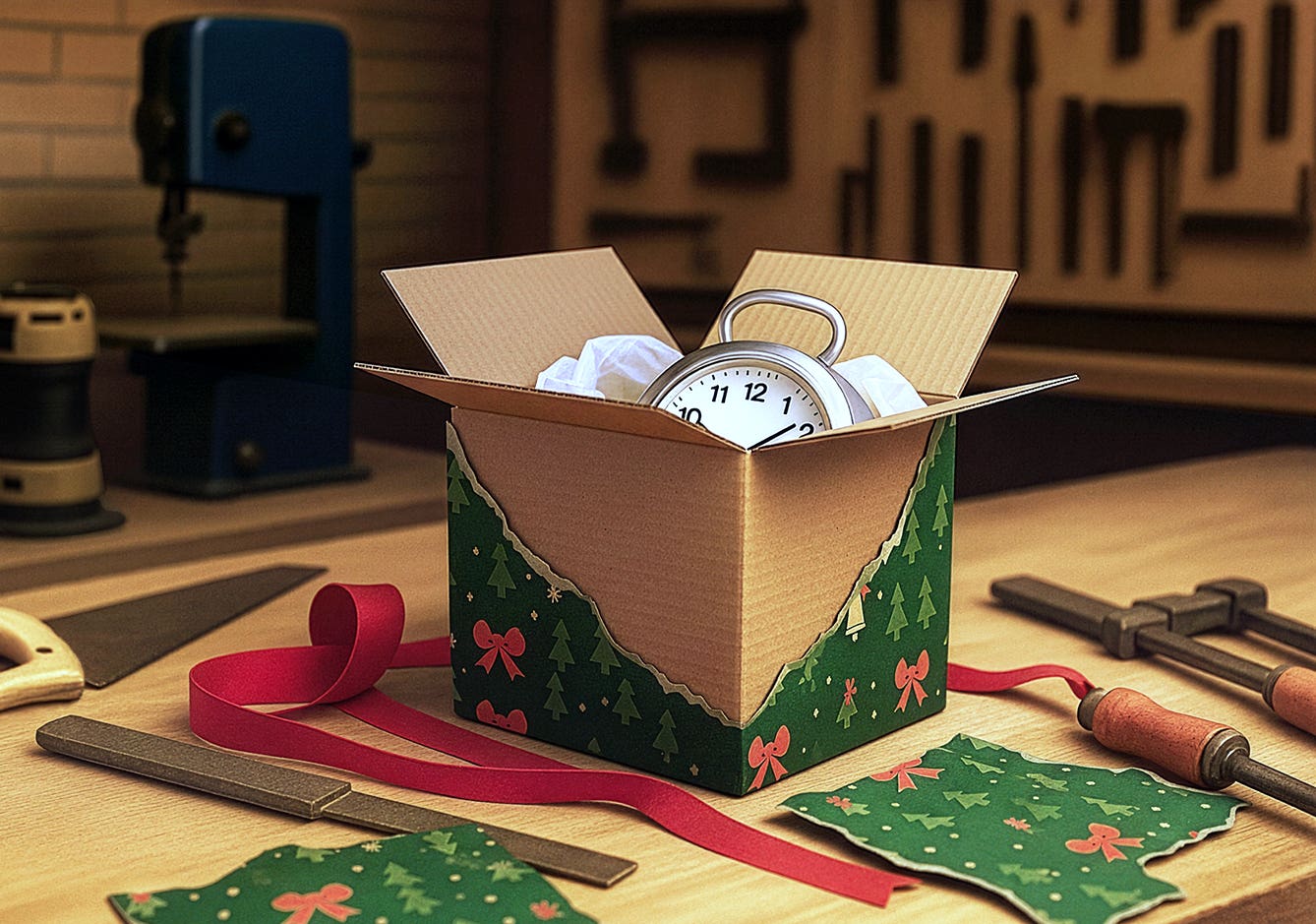The art of distressing: Making the new look old
Two-hundred-year-old furniture looks different than new furniture, even if the old furniture has been well cared for. The difference is caused, primarily, by color change (due to light and oxidation), wear and dirt accumulation as the furniture has aged.
There is no step-by-step right way to do distressing. It all depends on the look you are trying to imitate.
Two-hundred-year-old furniture looks different than new furniture, even if the old furniture has been well cared for. The difference is caused, primarily, by color change (due to light and oxidation), wear and dirt accumulation as the furniture has aged.
Imitating the look of oldness in newly made furniture, or newly made parts that you are attaching to old furniture, is called “distressing.” To distress wood, you must approximate the color change, wear, and dirt accumulation.
There is no step-by-step right way to do distressing. It all depends on the look you are trying to imitate. It’s more valuable to understand what you are trying to achieve and the broad methods for doing this. Then, you can choose the specific steps and techniques that will produce the exact look you want.
Color change
The best way to approximate color change is with stains and bleaches. Stains are most often used because most woods darken with age.
Dye stains usually work better than pigment stains, because dye stains color wood more evenly and naturally. Pigment stains applied directly to wood and wiped off highlight pores and other recesses by lodging in them and making them darker. Pigment added to a finish and applied as a toner tends to muddy the wood, which may actually provide the look you’re after.
Some woods, such as walnut, lighten with age. Other woods lighten because the sun has bleached them. New wood can be lightened artificially with two-part bleach – sodium hydroxide (lye) and hydrogen peroxide. Thin the bleach with water to achieve various degrees of lightening. Then stain the wood darker if you need to.
It’s always wise to practice coloring scrap wood before applying stain or bleach to the actual project, so you get an idea of what will happen. Changing a stain color, or replacing a bleached-out color after the fact, is often difficult.
Wear
Distressing is most often thought of as beating furniture with chains or other metal objects. Beating furniture is one way to fake wear in furniture. But wear can take many forms, and the trick is to make the artificial wear look natural.
Chains tend to make nearly identical ding marks. But dings and gouges made over 100-or-more years of natural wear would not be anywhere near identical. They would take many shapes. Furthermore, natural wear is not just ding marks but wood actually worn away on parts such as chair rungs and edges of table tops. This type of wear can be better imitated using rasps, sandpaper, and wire brushes.
The best way to determine the type of wear to add to new furniture is to look at old furniture and notice how it has been dinged and worn. Then choose the tools or objects that will most closely create the same effects. Most importantly, don’t make the same marks all over. Think of a piece of furniture as having spent a generation of time in each of several different households, some treating their furniture with care, others roughly.
Also, pay attention to whether the damage was done to the wood before it might have been refinished, for example, or whether it was done on top of the finish. Distressing done directly to the wood before it is stained and finished looks very different than distressing done on top of a finish.
Dirt
Old furniture often looks as if dirt has accumulated in recesses such as those on turnings, moldings and carvings. In some cases what has actually happened is that much of the finish has been worn away from the high spots by repeated rubbing, either from use or from a polishing cloth. The effect is the same, however. The recesses are darker.
You can imitate this effect easily by glazing. The word “glaze” refers both to a type of stain and to a method of applying the stain.
Any oil- or water-based stain, or paint thinned to the consistency of stain, can be used as a glaze. But manufacturers provide a special product called glaze, which is formulated to spread and be manipulated easier than stain or thinned paint. Glaze has a quality called “slip.”
The method of glazing is to apply a wet coat of glaze over a sealed surface with a rag, brush or spray gun. (The first coat of finish seals the surface.) Let the thinner flash off so the glaze loses its shine. Then wipe most or the entire glaze off the high spots leaving it in the recesses to simulate dirt. Allow the glaze time to dry, and then apply at least one more coat of finish to protect the glaze from being scratched or rubbed off.
Oil-based glazes (stains) are easier to use than water-based glazes because oil-based glazes dry much slower. You have more time to manipulate them to achieve the look you want.
On the other hand, you can coat over water-based glazes much sooner, and water-based glazes don’t fill the air with so much solvent smell. It is because of reduced solvent smell that most faux finishing done on walls in buildings is done with water-based glazes. The surface area to be covered is much larger than that of a piece of furniture.
One very nice characteristic of using a glaze is that you can remove it if you don’t like it, as long as it hasn’t hardened. This allows you to actually practice on the object you are finishing without fear of doing irreversible harm. Soak a rag with paint thinner (for oil-based glaze or stain) or water (for water-based glaze or stain) and wash the glaze away. Limited contact with paint thinner and water won’t damage any finish.
Probably the single biggest mistake people make using glaze to simulate dirt is not thinning the glaze enough and getting too thick a build. The dirt buildup in recesses of old furniture is usually very thin.
If you are using a manufacturer’s glaze rather than a stain, it’s best to thin the glaze with a glaze extender provided by the manufacturer. Extender is glaze without the pigment colorant. It will help maintain the easy working qualities of the colored glaze. But you can thin any oil-based glaze or stain with paint thinner and any water-based glaze or stain with water.
In most cases you will want to use a dark brown or walnut color to simulate dirt. The most popular colors for this step are Van Dyke brown and burnt umber. You can add these colors to neutral glaze to make your own colored glaze.
If the glaze dries before you get the excess wiped off, abrade it with fine steel wool. In fact, abrading after the glaze has dried is almost as effective a technique for manipulating color as wiping off the glaze while it is still damp.
Bob Flexner is the author of “Understanding Wood Finishing” and “Flexner on Finishing.”
This article originally appeared in the January 2018 issue.







